Operations management at the point of sale (POS) is essential to contemporary trade. It includes the procedures and tools that streamline corporate and consumer transactions. Technology has advanced to the point that POS systems are now multidimensional instruments that not only track sales but also act as essential hubs for data collection, inventory management, and customer engagement. A company’s bottom line can be considerably impacted by effective POS operations management since it increases productivity, accuracy, and customer happiness.
Point of Sale: Online & Offline

Online Store
Website Development: Online stores rely on well-designed websites, involving HTML, CSS, JavaScript, and responsive web design for seamless user experiences across devices. E-commerce Platforms: Implementation of e-commerce platforms like WooCommerce, Magento, or Shopify demands technical expertise in configuring, customizing, and optimizing these systems for product listings, shopping carts, and checkout processes.
Payment Gateways: Integration with payment gateways necessitates API integration, security protocols (SSL/TLS), and tokenization for secure online transactions.
Database Management: Efficient storage and retrieval of product catalogs, customer profiles, and order histories require database systems (e.g., MySQL, PostgreSQL) with indexing, caching, and query optimization.
Offline Store
POS Hardware Integration: Brick-and-mortar stores involve the integration of POS terminals with barcode scanners, cash drawers, and receipt printers, often requiring hardware drivers and device management.
Local Area Networks (LANs): Robust LAN setups with Ethernet connections and Wi-Fi networks facilitate real-time data synchronization between offline POS terminals and central databases.
Offline Mode Operation: Technical solutions for offline mode operation are essential, including data caching, local transaction storage, and synchronization mechanisms to ensure uninterrupted service during network outages.
Read More : Grocery Store POS: 5 Features Everyone Should Know
Omni-Channel Sales
Unified Data Warehousing: To provide a seamless shopping experience across channels, businesses need unified data warehousing solutions that consolidate customer data, inventory information, and sales histories from various touchpoints.
API Integration: Technical integration through Application Programming Interfaces (APIs) and data integration platforms facilitates the sharing of customer profiles, order histories, and cart contents across channels, ensuring continuity and personalization in the shopping journey.
Sales Operations
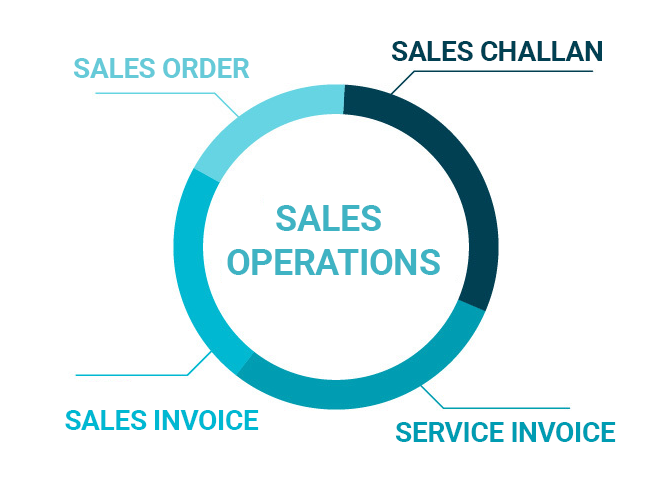
Sales operations encompass a series of intricately linked processes, each with its own technical considerations.
Sales Order
Order Entry Systems: Creation and management of sales orders require order entry systems with data validation mechanisms, rule-based engines for pricing and discounts, and integration with inventory databases to ensure product availability.
Workflow Automation: Automated order approval workflows, integrated with email notifications, necessitate workflow automation tools and email integration.
Sales Challan
Document Generation: Sales challans, used for goods dispatch, involve technical aspects of document generation, often utilizing templates and data mapping configurations.
Database Management: Efficient record keeping is achieved through database systems that store and retrieve challan data, enabling order tracking, reconciliation, and real-time status updates.
Sales Invoice
Invoice Generation: Sales invoice generation demands template design, dynamic data population, and integration with accounting systems for ledger updates.
Security Measures: Invoices often incorporate electronic signatures and digital certificates for legal validity and security. Technical solutions for invoice delivery, such as email automation and EDI, facilitate prompt customer communication and transaction records.
Service Invoice
Service Catalog Management: Service invoices specific to service-based businesses involve technical aspects related to service catalog management, hourly rate calculations, and service order tracking.
Automation: Automation of service order creation and scheduling through APIs enhances efficiency in service-based POS operations.
Order Fulfillment
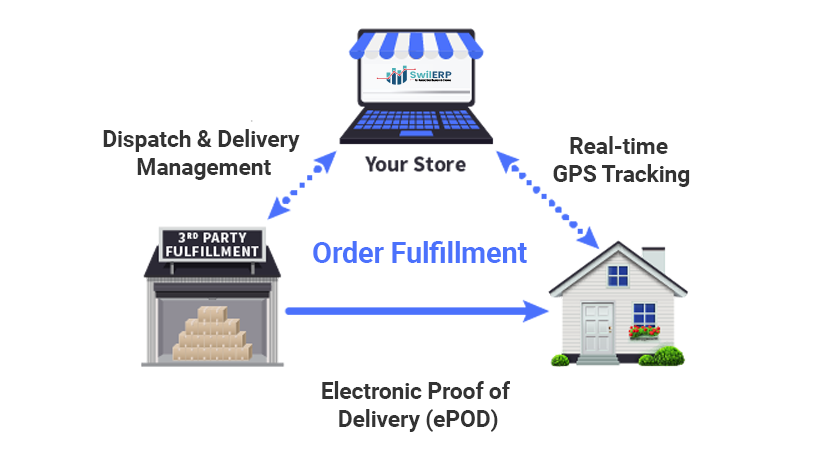
Order fulfillment is a multifaceted process involving the efficient picking, packing, and shipping of products to customers.
Dispatch & Delivery Management
Route Optimization: Dispatch and delivery management systems require route optimization algorithms to minimize delivery times and fuel costs.
Real-time GPS Tracking: Real-time GPS tracking of delivery vehicles provides visibility into vehicle locations, estimated arrival times, and route deviations.
Electronic Proof of Delivery (ePOD): Technical solutions for ePOD include digital signatures, geo-tagged photos, and real-time updates to ensure transparency and accountability in the delivery process.
Inventory Management
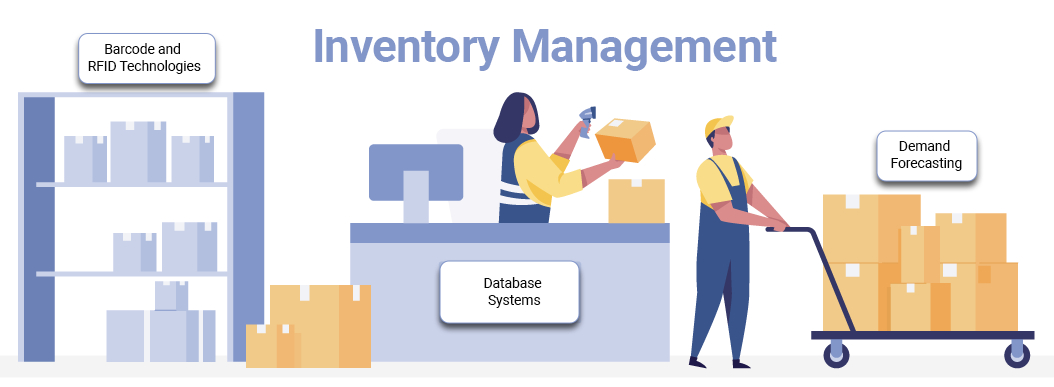
Efficient inventory management is crucial for maintaining optimal stock levels, and it involves various technical considerations:
Read More : What are some of the most popular techniques for Inventory Management?
Barcode and RFID Technologies: Accurate tracking of inventory items relies on barcode and RFID technologies, necessitating barcode scanners and RFID readers, as well as data management systems for real-time updates.
Database Systems: Inventory databases with optimized indexing and search capabilities ensure rapid retrieval of product information.
Demand Forecasting: Inventory control measures such as safety stock algorithms and reorder point calculations require sophisticated data analytics tools for demand forecasting and supply chain optimization.
Payment
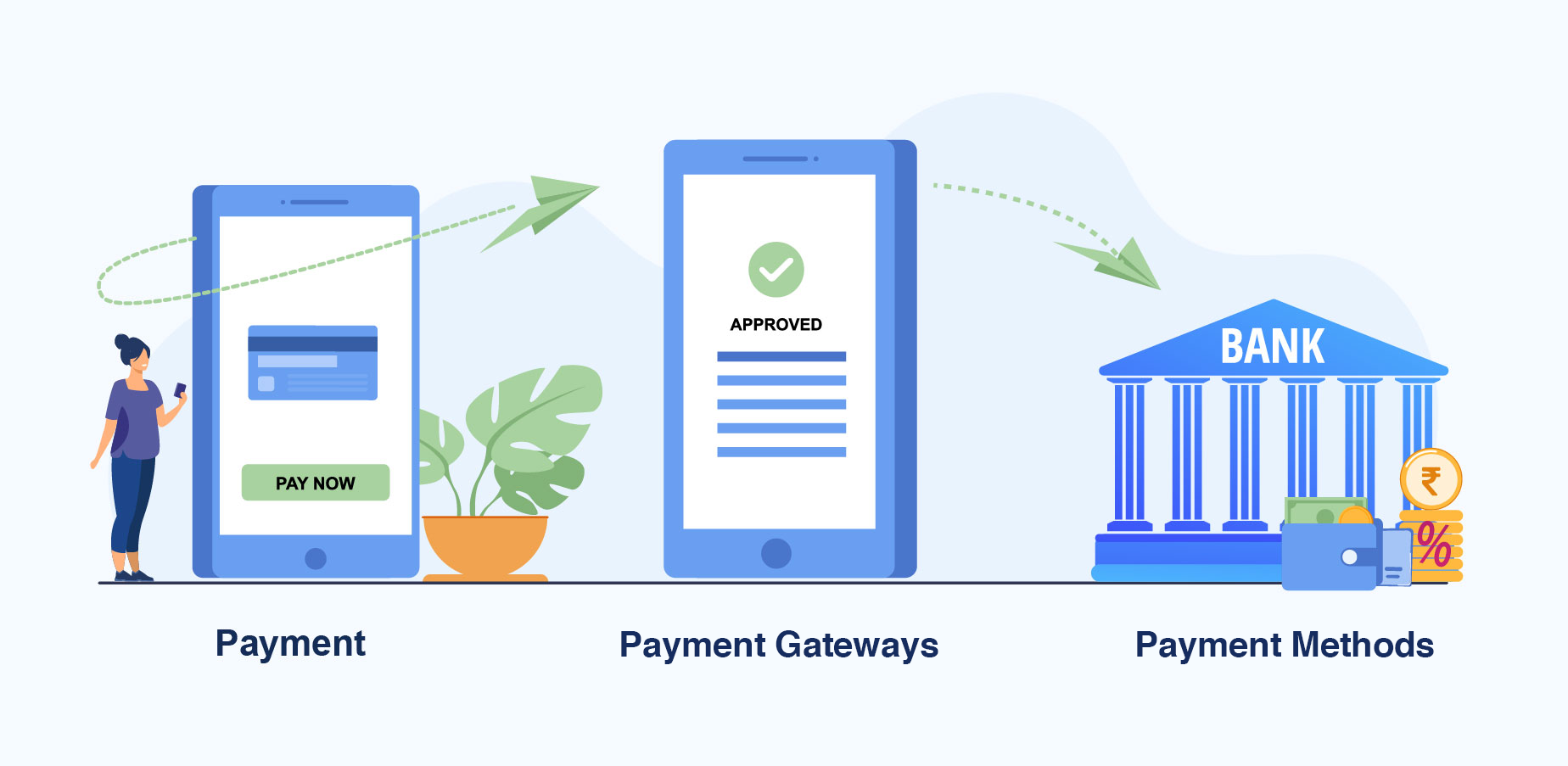
Payment processing is a pivotal component of POS operations, involving intricate technical aspects:
Payment Gateways: Integration with payment gateways demands secure encryption protocols (SSL/TLS), tokenization, and compliance with Payment Card Industry Data Security Standard (PCI DSS) for safeguarding customer payment data.
Payment Methods: Integration with various payment methods, including credit cards, digital wallets, and contact less payments, necessitates technical API integration and adherence to payment processor specifications.
Learn More : POS systems for retail and wholesale businesses in 2023
Fast-moving counters: Challenges & Solutions
Fast-moving counters in retail or service environments demand high-speed transaction processing capabilities:
Load Balancing: Load balancing mechanisms distribute transaction loads evenly across servers, optimizing resource utilization.
Server Optimization: Servers must be fine-tuned for performance, involving optimizations at the operating system and database levels.
Redundancy and Failover: Redundancy and failover mechanisms ensure uninterrupted service in the event of hardware or software failures, often utilizing clustering and failover solutions.
Managing Sales Promotions – Discount, Free Quantity, Coupons, Loyalty Points
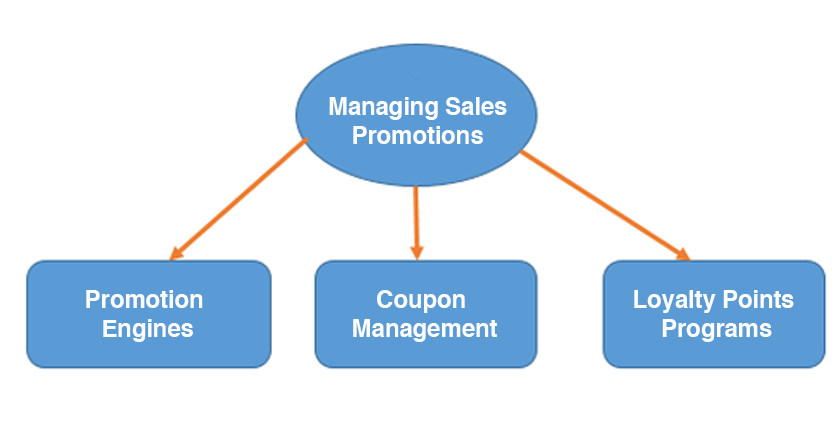
Managing sales promotions involves complex technical considerations:
Promotion Engines: Rule-based promotion engines define eligibility criteria and discount calculations, often requiring the use of scripting languages and business rule management systems.
Coupon Management: Coupon management systems require validation mechanisms, fraud detection algorithms, and integration with CRM for customer-specific promotions.
Loyalty Points Programs: Loyalty points programs demand databases for point accumulation and redemption tracking, along with integration into sales transactions for seamless rewards application.
Operational Security – Trust but verify
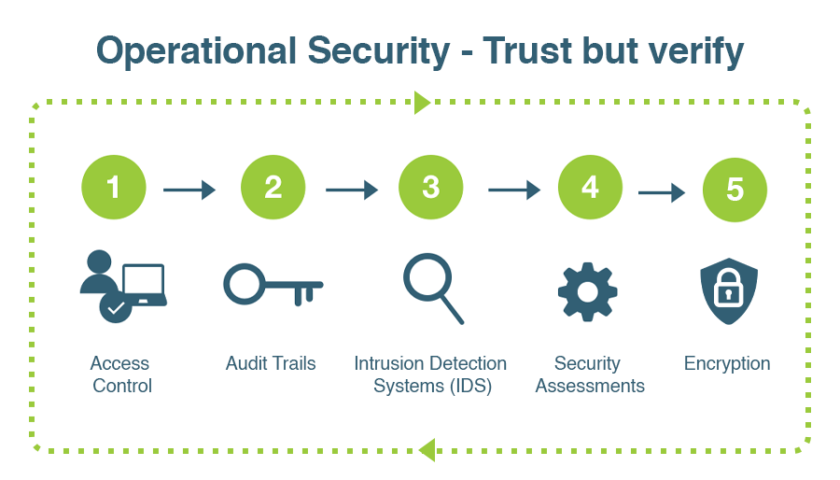
Operational security in POS operations management requires a multi-layered approach:
Access Control: User access control with role-based permissions involves technical configurations at the database and application levels.
Audit Trails: Audit trails for transaction monitoring require database triggers and log management solutions to track and report suspicious activities.
Intrusion Detection Systems (IDS): IDS solutions employ technical algorithms and heuristics to detect anomalies and potential security breaches.
Security Assessments: Regular security assessments, including vulnerability scanning and penetration testing, are vital to identify and mitigate potential risks.
Encryption: Encryption of data at rest and during transmission involves the use of cryptographic algorithms and key management practices to ensure confidentiality and integrity.
The Role of Data Analytics
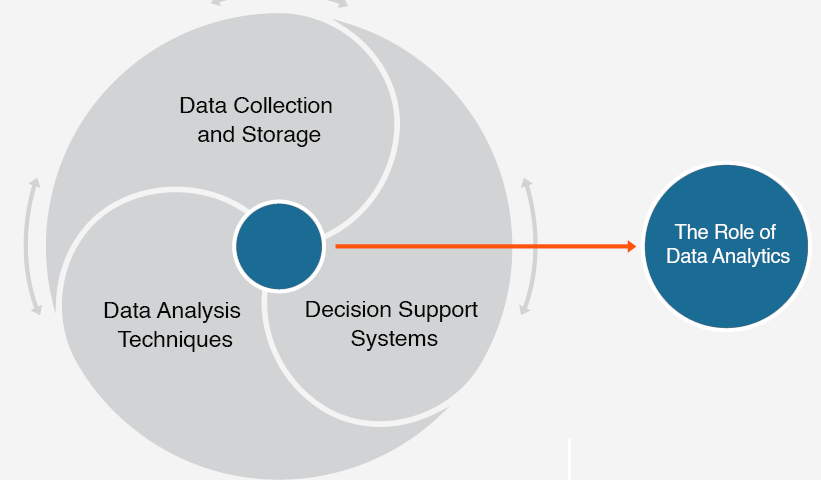
Data Collection and Storage
Large volumes of data, including as transaction histories, customer profiles, and inventory information, are produced by POS systems. It includes the procedures and technologies that make it easier for businesses and customers to do business. With the development of innovation, POS frameworks have changed into complex apparatuses that record deals as well as act as critical centers for information assortment, stock administration, and client commitment.
Compelling POS tasks the executives can fundamentally influence an organization’s primary concern by improving effectiveness, exactness, and consumer loyalty. Efficient data collection mechanisms, often utilizing Application Programming Interfaces (APIs) or data connectors, facilitate the seamless extraction of transactional data from various POS terminals.
Data Analysis Techniques
Data analytics is the process of drawing conclusions from POS data using statistical and computer techniques. Regression analysis, clustering, and machine learning algorithms are some of the methods that can be used to find trends, forecast consumer behavior, and improve pricing tactics. In this context, analytics tools like Tableau and Power BI are useful. The POS domain requires the use of complex statistical and computational approaches for data analysis.
Advanced regression models, clustering algorithms, and machine learning algorithms, such as Support Vector Machines (SVM) or Random Forests, must be explored in-depth.
Notwithstanding these procedures, it’s basic to dig into the execution of information preprocessing steps, highlight designing, and the mix of information perception devices. Ideas like regulated and solo learning, peculiarity recognition, and prescient demonstrating assume a critical part in extricating noteworthy bits of knowledge from POS information.
Decision Support Systems
Data- driven decision support systems help businesses make informed choices in real- time. They give dashboards and reports that offer receptivity into deals trends, force development, and client preferences. These systems enable businesses to acclimate strategies on the cover, perfecting profitability. The decision support systems within POS operations management rely on advanced data analytics and business intelligence solutions. This entails the application of multidimensional data cells, data storage, and online logical processing( OLAP) ways.
In addition to this, complex data visualization libraries, such as D3.js or Plotly, are deployed to create interactive dashboards and reports. Agile and data-driven decision-making processes are made possible by the incorporation of real-time data streaming systems like Apache Kafka or RabbitMQ, which permit the quick dissemination of insights to important stakeholders.
Read More : Technology and Data Analytics: Redefining the Customer Experience in the Pharmacy Sector
Inventory Management in POS Operations
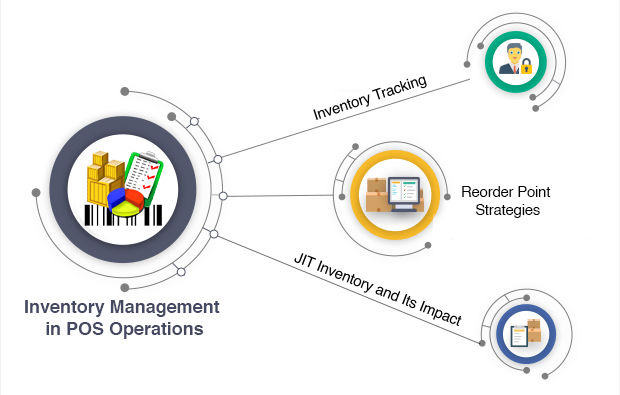
Inventory Tracking
Powerful stock administration is a foundation of fruitful POS tasks. POS frameworks track stock levels progressively, permitting organizations to screen stock levels, diminish overloading or understocking, and limit shrinkage. Barcode scanning and RFID technology improve inventory accuracy. The crux of inventory management in the realm of POS operations entails the implementation of intricate tracking mechanisms.
With a thorough investigation of the underlying RFID protocols, frequency ranges, and data encoding procedures, this entails the use of RFID (Radio-Frequency Identification) technology.
The technological components of barcode scanning must also be examined, including the optical and laser-based scanning technologies used in barcode scanners as well as symbology standards like UPC, EAN, and QR codes.
The integration of these technologies with the central inventory management system should be analyzed in detail.
Reorder Point Strategies
Reorder point strategies in POS operations management help determine when to reorder products.
Strategies like Economic Order Quantity (EOQ) and wellbeing stock computations guarantee that organizations keep up with ideal stock levels, diminishing conveying costs and stockouts. Reorder point systems, a foundation of stock administration, require a significant comprehension of numerical models like the Economic Order Quantity (EOQ) and its varieties. This includes taking apart the formulae, presumptions, and boundaries that oversee ideal stock levels.
In addition, the intricate calculations that go into determining safety stocks and reorder point algorithms, which take into account things like demand forecasting, demand in-depth analysis, and technical expertise. To achieve the delicate balance between stockouts and excess stock, it is essential to utilize inventory optimization software and mathematical modeling tools.
JIT Inventory and Its Impact
Just-in-Time (JIT) inventory management minimizes waste and storage costs by ordering goods only when needed. POS frameworks assume a critical part in JIT execution by giving constant information on deals and stock levels. This methodology can prompt expense investment funds and further developed store network effectiveness. Just In Time (JIT) stock administration is a perplexing technique that depends on exact coordination among providers and retailers. With regards to POS activities the executives, JIT includes carrying out refined request determining models, store network perceivability arrangements, and deft request the board frameworks.
The technical intricacies of JIT encompass the utilization of Kan-ban systems, electronic data interchange (EDI), and Vendor-Managed Inventory (VMI) protocols. Furthermore, JIT necessitates seamless integration with suppliers’ systems, often facilitated through Application Programming Interfaces (APIs) and EDI standards like ANSI X12.
Employee Training and Engagement
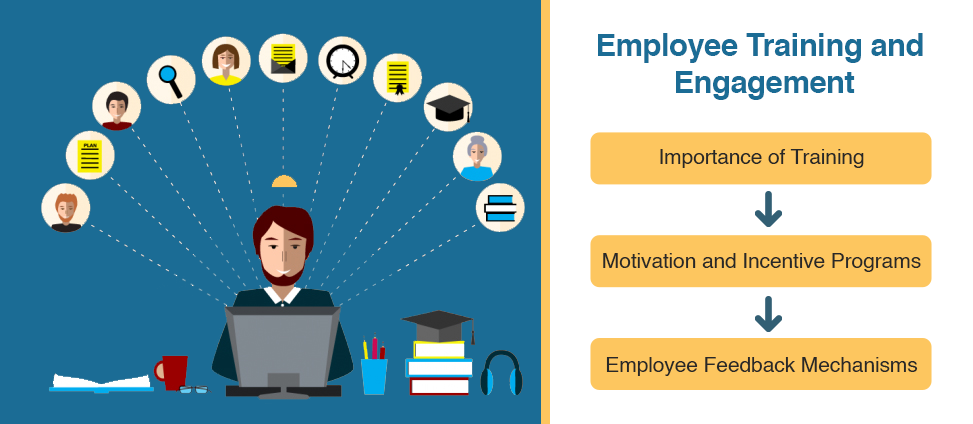
Importance of Training
To use a POS system effectively, staff must be properly trained. Training programs should cover not only how to use POS hardware and software but also customer service and data security best practices. Ongoing training ensures that employees stay up to date with technology and customer trends. Training employees in the context of POS operations management involves a technical deep dive into the hardware and software components. POS terminal and peripheral device configuration, upkeep, and troubleshooting are all covered in depth as part of this.
Additionally, training should cover cryptographic methods for securing customer transactions as well as the technical aspects of data security, such as protocols for identifying and mitigating security threats. Representatives can work all the more autonomously and rapidly when POS is set up
One of the specialized benefits of a very much carried out POS framework is the enablement of representatives to work more independently and conveniently.
This change is supported by different specialized factors:
- Stock Computerization: POS frameworks furnished with stock administration modules robotize stock level observing and reordering processes. Workers are enabled with constant perceivability into stock information, including SKU data, amounts close by, and reorder limits. This robotization, driven by complex calculations, decreases the requirement for manual stock checks and rates up the restocking system.
- Productive Checkout: Progressed standardized identification filtering and installment handling innovations smooth out the checkout interaction. The POS system automatically calculates prices and applies discounts so employees can quickly scan items. Secure and quick installment handling, incorporated with different installment techniques, guarantees faster exchange finishing.
- Client Information Access: With POS frameworks, representatives can quickly get to client profiles and exchange history.This specialized capacity empowers customized associations and productive upselling. For example, the framework can suggest items given past buys or faithfulness program information, assisting the dynamic cycle for the two representatives and clients.
- Reporting in real time: POS frameworks produce ongoing reports, furnishing representatives with prompt bits of knowledge into deals execution, stock turnover rates, and client patterns. Specialized revealing devices and dashboards work with speedy admittance to basic business measurements, empowering representatives to pursue informed choices on evaluating, advancements, and stock administration right away.
In essence, a well-implemented POS system’s technical sophistication enables employees to operate more independently and efficiently. Via robotizing routine undertakings, giving prompt admittance to basic information, and improving on complex cycles, representatives can zero in on higher-esteem exercises, for example, upgrading client experience, examining information drifts, and advancing deals systems. This specialized strengthening converts into uplifted efficiency and spryness, at last helping the two workers and the business all in all.
Motivation and Incentive Programs
Motivated employees are more likely to provide excellent customer service. Incentive programs, such as sales commissions and performance bonuses, can encourage employees to upsell products and enhance the customer experience. Despite having its roots in motivation theory, incentive programs also need to comprehend commission structures, performance indicators, and incentive calculation procedures on a technical level. Utilizing sophisticated algorithms and incentive management software is required for this.
Additionally, analytics of employee performance data are crucial for assessing and improving the efficacy of incentive schemes. In order to determine the relationship between incentives and performance indicators, data-driven methodologies must be used.
Employee Feedback Mechanisms
Mechanisms for employee feedback can help POS operations. Process enhancements and the identification of system bottlenecks or technical issues can result from the insights and suggestions of front-line employees. Effective employee feedback mechanisms in POS operations management necessitate the implementation of technological solutions, such as employee surveys and feedback forms, often integrated with Human Resources Information Systems (HRIS).
Customer Experience Enhancement
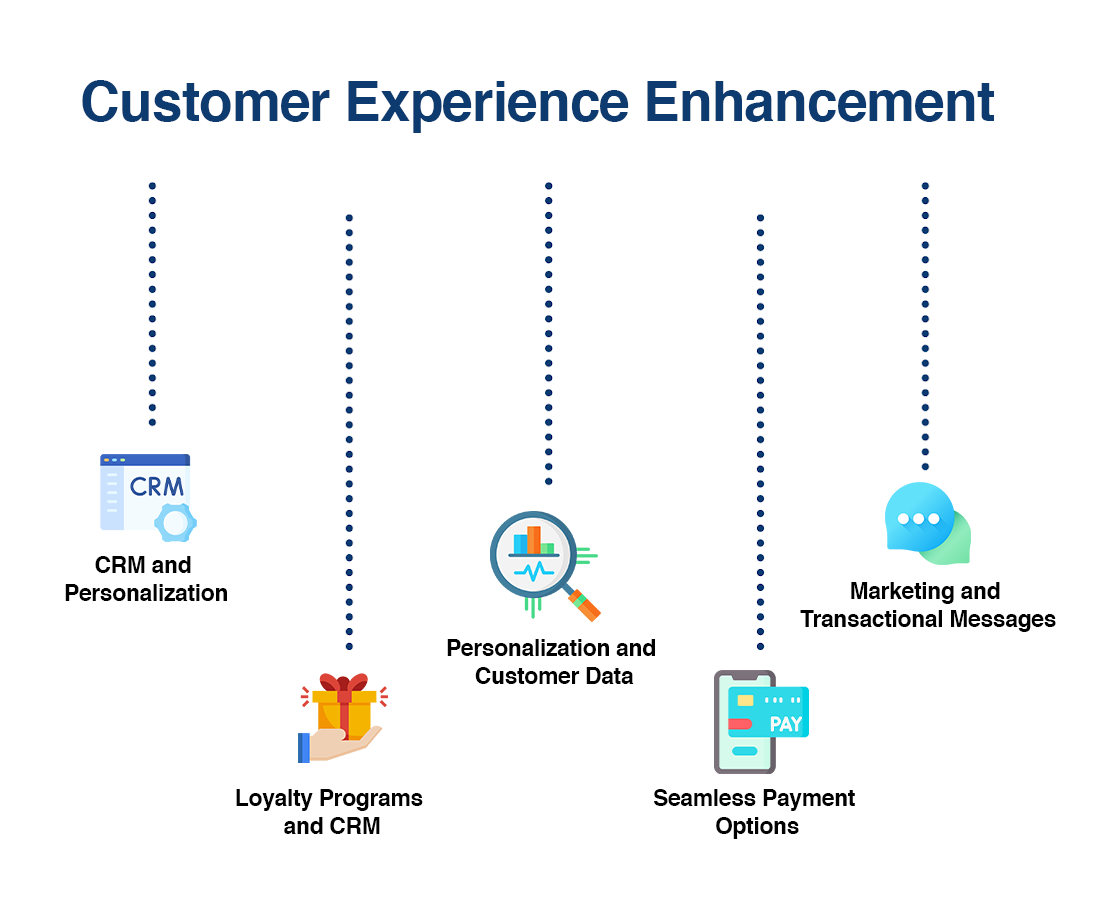
CRM and Personalization
Customer Excellence
Effective data collection and management is the first step in comprehending the CR The mixture of Client Relationship The board (CRM) and Personalization inside the domain of POS tasks the executives introduces a specialized change in outlook, where accuracy and information driven experiences support client communications.
Client extraordinary, frequently alluded to as records receivable, includes following and dealing with the monetary exchanges between the business and its clients. This involves the use of cutting edge information base administration frameworks to record remarkable equilibrium, credit terms, and installment history.
The creation of complex queries to retrieve up-to-date customer outstanding information and the design of normalized database schemas for efficiently storing financial data are two examples of technical aspects. The accuracy of calculating outstanding balances is further improved by integration with accounting software and secure APIs for synchronizing financial data in real time.
Client Buying History
The essence of personalization lies in the definite examination of client buying history. Specialized investigation includes the usage of information warehousing arrangements, which work with the union and change of value-based information into significant bits of knowledge.
Information mining methods, for example, affiliation rule mining and successive example investigation, enable organizations to uncover stowed away buying examples and patterns inside the immense datasets of verifiable exchanges. Utilizing equal handling structures like Apache Hadoop or Flash speeds up information mining tasks, empowering organizations to convey customized item proposals and special proposals progressively.
Client Visits
Grasping client conduct and improving in-store encounters require following client visits to actual areas. Specialized arrangements incorporate the sending of Wi-Fi-based global positioning frameworks, reference point innovation, and geo-fencing.
These advancements influence Wi-Fi passageways, Bluetooth Low Energy (BLE) reference points, or GPS information to identify and screen client visits progressively. The information gathered is then coordinated into CRM frameworks, giving organizations bits of knowledge into pedestrian activity, stay times, and every now and again visited regions inside their stores. High level information handling and AI calculations can recognize client visit designs, empowering organizations to tailor showcasing systems and item situations appropriately.
Customer Details
A robust CRM system with a well organized customer database is necessary for collecting and maintaining comprehensive customer information. Specialized perspectives envelop the improvement of client information models, including tables for individual data, contact subtleties, and segment information.
Information approval strategies, for example, normal articulations and information type limitations, guarantee information exactness and trustworthiness. Reconciliation with outsider information improvement administrations permits organizations to expand their client subtleties with extra data, for example, virtual entertainment profiles, work history, and buying inclinations. Besides, using a programming interface based on incorporation with client touchpoints, for example, online enlistment structures and dedication program applications, works with consistent information synchronization between various channels and the focal CRM framework.
Businesses can cultivate customer loyalty and maximize the value of each customer interaction by mastering these technical aspects of CRM and personalization within POS operations management.
Personalization and Customer Data
Businesses can use this data to personalize the customer experience in a variety of ways, such as:
- Recommending products that the customer is likely to be interested in
- Sending targeted marketing messages
- Providing special offers and discounts
- By personalizing the customer experience, businesses can increase the likelihood of repeat purchases and customer loyalty.
Here are some specific examples of how businesses can use POS data to personalize the customer experience:
- A clothing store could use POS data to track which products each customer has purchased in the past. The store could then recommend similar products to the customer when they next visit the store.
- A grocery store could use POS data to track which products each customer buys on a regular basis. The store could then send the customer coupons for those products or offer them discounts on their next purchase.
- An online retailer could use POS data to track which products each customer views or adds to their cart but does not purchase. The retailer could then send the customer emails or push notifications reminding them about those products.
Personalization in the context of POS operations management entails the utilization of sophisticated Customer Relationship Management (CRM) systems. POS frameworks gather information about client buys, for example, the items they purchase, how frequently they purchase, and the amount they spend.
This data can be used by businesses to tailor the customer experience. They can, for instance, send targeted marketing messages or recommend products that the customer is likely to be interested in.
This can help organizations with expanding deals and client devotion. At the point when clients feel that organizations comprehend their necessities and inclinations, they are bound to return and make rehash buys.
Loyalty Programs and CRM
POS operations management often integrates with Customer Relationship Management (CRM) systems and loyalty programs. POS frameworks gather information about client buys, for example, the items they purchase, how frequently they purchase, and the amount they spend. This data can be used by businesses to tailor the customer experience. They can, for instance, send targeted marketing messages or recommend products that the customer is likely to be interested in. This can assist organizations with expanding deals and client devotion. At the point when clients feel that organizations comprehend their necessities and inclinations, they are bound to return and make rehash buys.
In the realm of loyalty programs and Customer Relationship Management (CRM) within POS operations management, a technical exploration is essential to maximize their effectiveness.
Loyalty programs necessitate the deployment of data-driven methodologies, including RFM (Recency, Frequency, Monetary) analysis and cohort analysis, to segment and target customers effectively. The technical challenges are in accurately tracking and redeeming loyalty points and incentives through the connection of CRM systems and POS terminals with loyalty program data.
CRM systems, on the other hand, delve into complex database architectures, where data normalization and relational database design are critical. Utilizing advanced querying languages like SQL (Structured Query Language), CRM systems retrieve customer information with precision, enabling personalized interactions at the point of sale. CRM capabilities are further improved by using API-based connectors with POS software and marketing automation solutions.
Seamless Payment Options
Payment options must be convenient for today’s customers. Payment options like mobile payments, digital wallets, and credit and debit cards are now accepted by POS systems. Offering an assortment of installment choices improves the client experience and can prompt expanded deals. A thorough comprehension of payment processing protocols, secure communication standards, and adherence to financial regulations are necessary for the seamless integration of various payment options within the POS environment.
Installment card exchanges request consistence with rigid information security principles, like PCI DSS. Specialized viewpoints incorporate information tokenization, encryption during transmission, and secure key administration. Furthermore, the integration of EMV (Euro pay, MasterCard, Visa) chip technology and NFC (Near Field Communication) for contact less payments involves intricate hardware and software configurations.
Computerized wallets and portable installment arrangements present extra intricacies. Grasping the specialized underpinnings of these innovations, including tokenization, biometric verification, and secure territory execution, is fundamental to give clients secure and helpful installment choices.
Marketing and Transactional Messages
Inside the domain of POS tasks the executives, the essential coordination of showcasing and value-based messages addresses a modern way to deal with client experience improvement. It requires a thorough comprehension of data segmentation methods, personalized content delivery mechanisms, and communication protocols.
Conditional messages, like request affirmations and delivery notices, are actually executed through email, SMS, or in-application informing frameworks. The execution of Utilization Programming Points of interaction (APIs) and secure conventions like SMTP (Basic Mail Move Convention) or SMS passages guarantees the opportune and secure transmission of these strategic messages.
Showcasing messages, then again, depends on complicated client division calculations that classify people given procurement history, inclinations, and socioeconomic. This specialized division, frequently fueled by AI models and client information stages (CDPs), empowers organizations to make hyper-designated showcasing efforts.
The reconciliation of promoting and value-based messages with POS frameworks orders continuous information synchronization, guaranteeing that clients get exact and modern data. In addition, methods for A/B testing and message optimization are used to get the most out of engagement and conversion rates.
Emerging Technologies in POS Operations
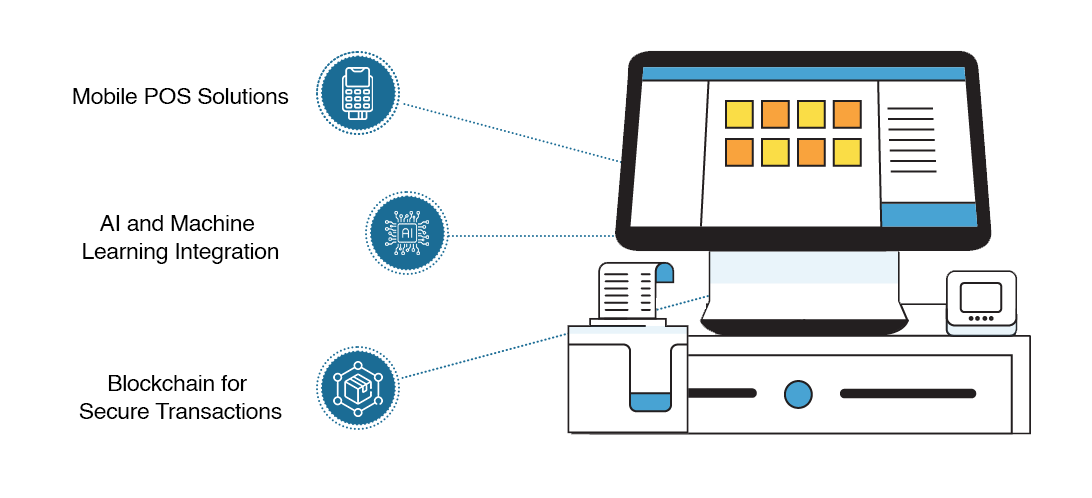
Mobile POS Solutions
Mobile POS solutions, often run on tablets or smartphones, are becoming increasingly popular. They empower organizations to offer a more adaptable and helpful shopping experience, permitting staff to finish exchanges anyplace in the store. Versatile POS additionally upholds highlights like portable installments and stock checks. Traditional point of sale processes are being fundamentally altered by mobile POS solutions. They rely on mobile devices, often smartphones or tablets, and necessitate the integration of mobile operating systems (e.g., Android, iOS) with POS software.
The development of mobile apps, responsive design for various screen sizes, and guaranteeing flawless data synchronization between mobile devices and the central POS system are all technical considerations, frequently facilitated by RESTful APIs.
In order to protect sensitive client information during mobile transactions, mobile POS must have strong encryption methods in place as well as secure data transmission over public networks.
AI and Machine Learning Integration
POS operations are changing as a result of artificial intelligence (AI) and machine learning. These tools can forecast consumer preferences, real-time price optimization, and fraud or suspicious transaction detection. Chatbots and virtual assistants can also enhance customer service at the point of sale.
The combination of Computerized reasoning (artificial intelligence) and AI (ML) advancements inside POS tasks the executives involves the use of intricate calculations and computational models. Deep neural networks, natural language processing (NLP), and reinforcement learning methods are frequently used in these algorithms.
Continuous data ingestion, model training, and large-scale inference are required for AI-driven recommendation engines and personalization algorithms. Sending AI models anxious gadgets like POS terminals requires contemplation for model size, dormancy, and computational effectiveness.
Anomalies can also be identified, patterns can be recognized, and real-time decisions can be made using fraud detection systems that use ML. These frameworks should be fit for handling huge measures of exchange information continuously, requiring superior execution registering foundation and conveyed handling abilities.
Blockchain for Secure Transactions
Blockchain innovation is building up forward movement in the realm of POS tasks the board. It offers secure and straightforward exchanges, decreasing the gamble of misrepresentation. Blockchain can be utilized to confirm the legitimacy of high-esteem things and guarantee the uprightness of supply chains. The reception of blockchain innovation inside POS activities presents the idea of decentralized and secure exchange records. It is essential to have an understanding of the technical aspects of blockchain, such as the creation of smart contracts, cryptographic hashing, consensus algorithms (such as Proof of Work and Proof of Stake), and so on.
Blockchain-based POS systems enable secure and transparent transactions by immutably recording every transaction on a distributed ledger. However, they also require robust network infrastructure for peer-to-peer communication and the integration of cryptographic key management for secure user access.
Future Trends in POS Operations Management

IoT and Smart Devices
The Web of Things (IoT) is ready to upset POS tasks. Real-time data on inventory levels, customer traffic, and equipment maintenance requirements can be provided by smart devices that are connected to the internet. IoT-empowered sensors can likewise improve security and decrease burglary. The Internet of Things (IoT) integration within POS operations management delves into the convergence of physical and digital worlds. The use of IoT sensors, RFID tags, and IoT gateways for real-time monitoring of inventory levels, equipment status, and even customer foot traffic is included in the technical exploration.
Furthermore, in order to fully utilize the plethora of data produced by connected devices, an understanding of IoT protocols like MQTT and CoAP as well as IoT data analytics tools is crucial. Real-time processing requires edge computing capabilities and scalable cloud solutions for IoT data storage.
Augmented Reality in Retail
The retail industry is changing because of augmented reality (AR). Before making a purchase, customers can utilize AR apps to see things in the actual world. To provide immersive retail experiences and tailored product suggestions, POS systems are integrating AR. Applications for augmented reality (AR) in retail demand in-depth technical understanding of mobile device AR development frameworks like ARKit and ARCore. Additionally, computer vision methods including object detection, feature tracking, and spatial mapping are frequently used in AR applications.
Expertise in API development, data synchronization, and the creation of AR experiences that improve product visualization, consumer engagement, and ultimately sales are required for seamless integration with POS systems.
Sustainability and Green POS
Natural maintainability is a developing concern, and organizations are consolidating eco-accommodating practices into their POS tasks. Green POS frameworks intend to decrease paper utilization, energy utilization, and waste. Supportable practices benefit the planet as well as resound with ecologically cognizant clients. The reception of supportable and green practices inside POS tasks the executives includes a specialized assessment of energy-productive equipment arrangements, including low-power processors and showcases. This stretches out to upgrading power the executives settings and using energy-productive cooling frameworks.
Reducing paper usage in receipt printing through e-receipts and integrating renewable energy sources, such as solar panels, into the POS infrastructure, requires technical expertise in energy monitoring, resource allocation, and sustainable technology integration.
Challenges and Pitfalls
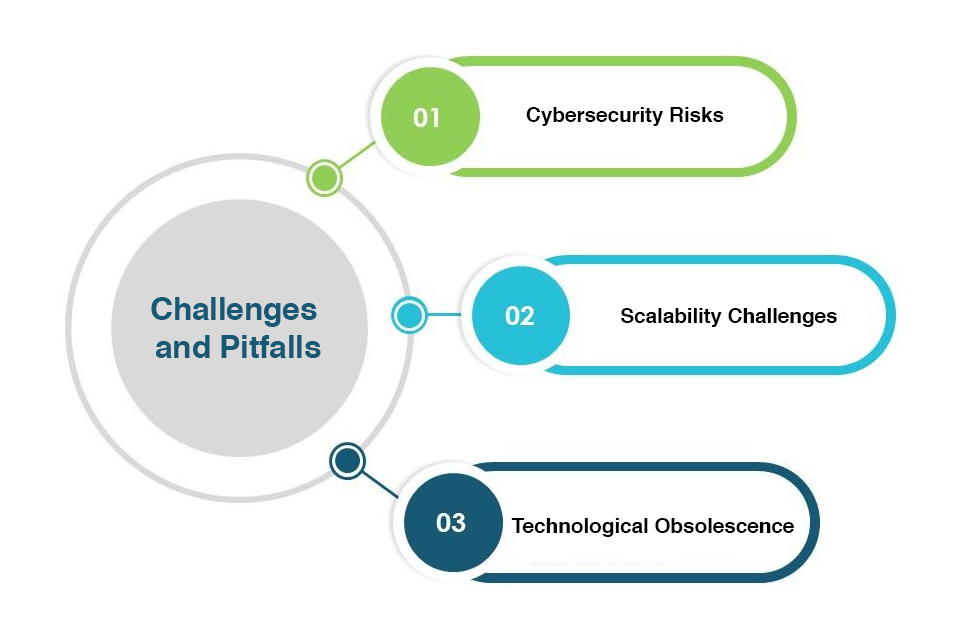
Cybersecurity Risks
As POS frameworks become more complex, they likewise become appealing focuses for cybercriminals. Organizations should stay cautious against information breaks and carry out strong network safety measures to safeguard client data. Specialized investigation of network safety chances incorporates weakness evaluations, infiltration testing, and danger displaying. Recognizing potential assault vectors, for example, SQL infusion, DDoS assaults, and malware penetration, is urgent.
Implementing robust intrusion detection systems (IDS), security information and event management (SIEM) solutions, and regularly updating firewall rules and access control lists are technical measures that mitigate cybersecurity risks. Understanding encryption calculations and key administration procedures for information security is fundamental.
Scalability Challenges
Scaling up POS operations may be difficult for companies experiencing rapid expansion. Executing adaptable POS arrangements that can oblige expanded exchange volumes and extra areas is significant to keep away from bottlenecks and framework disappointments. Scalability challenges in POS operations management demand a technical evaluation of system architecture and capacity planning. Depending on their unique needs, businesses must choose horizontal and vertical scaling techniques.
Utilizing resource allocation and management tools like Kubernetes and containerization technologies like Docker enables POS systems to easily handle rising transaction volumes, the opening of new stores, and the addition of new features.
Technological Obsolescence
Technology evolves quickly, and POS systems can become obsolete if not regularly updated. Depending on their unique needs, businesses must choose horizontal and vertical scaling techniques. Utilizing resource allocation and management tools like Kubernetes and containerization technologies like Docker enables POS systems to easily handle rising transaction volumes, the opening of new stores, and the addition of new features. Technical evaluation of system life cycles, hardware refresh cycles, and software versioning is imperative.
Agile technology adoption strategies, such as software-defined infrastructure and modular hardware components, enable seamless migrations to newer technologies and guarantee the competitiveness and security of POS operations.
Recommendations and Best Practices
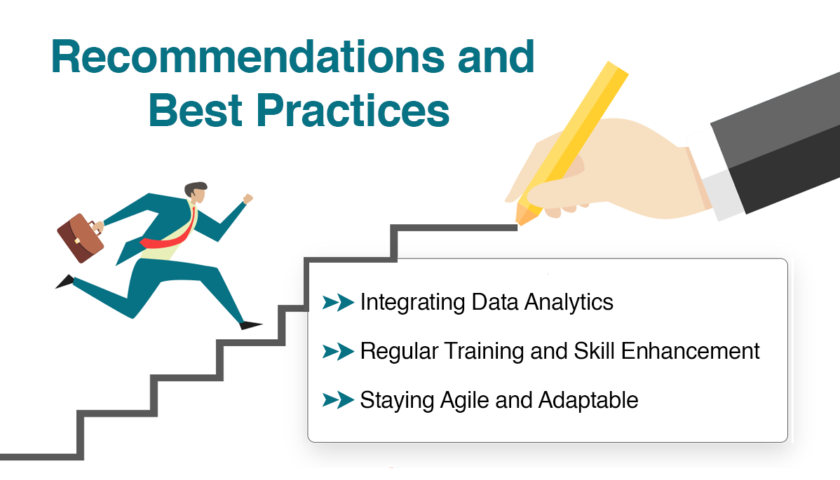
Integrating Data Analytics
Coordinating information examination into POS tasks is fundamental for remaining cutthroat. Organizations ought to put resources into investigation apparatuses and information researchers to separate significant bits of knowledge from their information and drive informed direction. Effective integration of data analytics in POS operations management requires the creation of data pipelines and data lakes. Leveraging scalable cloud-based data analytics platforms and data warehousing solutions streamlines data processing and analysis.
Data is efficiently ingested, transformed, and analyzed when data orchestration tools and real-time stream processing frameworks like Apache Kafka are used. Organizations ought to put resources into gifted information researchers likewise and experts capable of information representation apparatuses like Scene and Power BI to determine noteworthy experiences.
Regular Training and Skill Enhancement
Representative preparation ought to be a continuous interaction. Routinely refreshing staff on new POS highlights, security conventions, and client care procedures can improve effectiveness and consumer loyalty. Keeping a gifted labor force requests persistent preparation and expertise upgrade programs. Organizations ought to put resources into Learning The executives Frameworks (LMS) for representative preparation and information maintenance.
Moreover, integrating gamification and intuitive e-learning modules into preparing projects can upgrade commitment and information maintenance. Specialized certificate programs for workers, for example, PCI DSS consistence preparing and network safety confirmations, add to a balanced range of abilities.
Staying Agile and Adaptable
Businesses should continue to be adaptable and flexible as the market and technology change. POS operations management that is nimble enables businesses to quickly change course and capture opportunities. Staying agile and adaptable within POS operations management involves adopting DevOps practices for continuous integration and continuous deployment (CI/CD). Implementing infrastructure as code (IaC) enables rapid provisioning and configuration of resources.
The use of containers and microservice architectures increases the flexibility of the system and facilitates the rapid introduction of new functions and improvements. Collaboration tools such as version control systems (e.g. Git) and release tracking environments (e.g. Jira) make development and maintenance processes more efficient.
The Future of POS Operations Management
POS operations management will continue to be an essential part of modern businesses even as technology continues to advance and customer expectations change. By embracing arising advancements, keeping an emphasis on information-driven navigation, and focusing on client experience, organizations can flourish in a steadily changing retail scene. Remaining educated and versatile will be the way to outcome in the unique universe of POS activities the executives. Taking everything into account, POS tasks the board isn’t just about handling exchanges; it’s tied in with streamlining each part of the client venture, from installment to customized suggestions. By dominating the specialized complexities and embracing development, organizations can accomplish proficiency, exactness, and consumer loyalty, at last driving their outcome in the cutthroat market.









